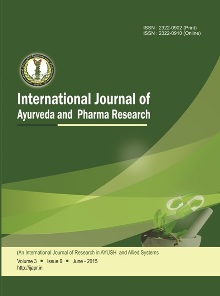Ayurvedic Management of Grahani w.s.r. to Irritable Bowel Syndrome
Abstract
Ayurveda provides a comprehensive approach to abdominal and digestive disorders by focusing on the root causes of disease. Among its core concepts is Grahani, described as the principal site of digestion and absorption, situated between the Amashaya (stomach) and Nabhi, referred to as Pachyamanashaya. The Pachakagni (digestive fire) located here is responsible for processing food and converting it into nutritive essence. Impairment of this Jatharagni (Mandagni) results in Grahani Roga, marked by weak digestion, formation of Ama (undigested or toxic residues), and symptoms such as irregular bowel movements, abdominal discomfort, and malabsorption. These clinical features show close similarity with irritable bowel syndrome (IBS) as recognized in modern medicine. This case study highlights the role of Shamana Chikitsa and Piccha Basti in managing severe IBS, emphasizing the relevance of Ayurvedic management in restoring digestive balance.
Copyright (c) 2025 International Journal of Ayurveda and Pharma Research

This work is licensed under a Creative Commons Attribution-NonCommercial-ShareAlike 4.0 International License.


